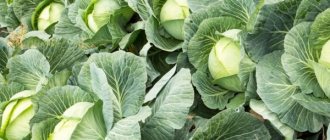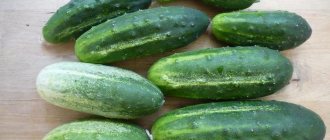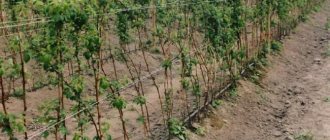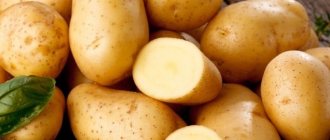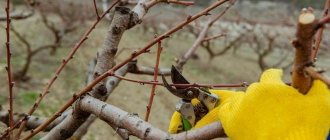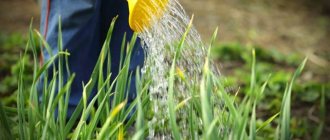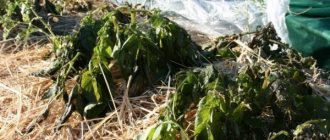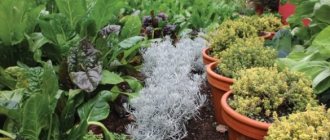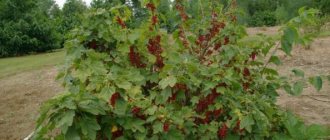Do I need to trim onion sets before planting?
Previously, it was believed that it was completely unnecessary to prepare onion sets for planting.
The plant is quite unpretentious and does not require any special attention. In most cases, the matter was limited to sorting out the seed material in order to remove damaged bulbs. Practice has shown the inconsistency of this approach. And before you start growing onions, you need to properly prepare the bulbs for planting.
This process proceeds in several main directions:
- stimulation of plant growth;
- prevention of harmful bacteria;
- increasing the plant’s resistance to harmful insects and major diseases;
- increasing resistance to difficult weather and climatic conditions;
- prevention of turnip rotting.
Within the framework of the listed directions, onion sets are also trimmed before planting. Let’s try to find out what this procedure is and why it is necessary.
Why and how to trim onions
The question of whether it is necessary to prune onion sets before planting worries many gardeners. There is no clear answer to this question yet. Some believe that planting onions is quite acceptable without trimming the top. Circumcision, from their point of view, is a waste of time, because each individual bulb will need to be processed. Others, on the contrary, are convinced that pruning onion sets is a mandatory process, without which obtaining a full harvest is not possible. To be fair, it should be noted that most gardening experts consider pruning onions before planting necessary.
Cutting off the top of the bulb means ensuring accelerated growth of greenery. The greens will begin to grow earlier due to the fact that the feather of the bulb will not have to try to make its way through the scales. It will come to the surface without any extra effort, as a result of which each bulb will produce abundant and even shoots.
The sooner the onion sprouts, the sooner the bulb will form. After trimming the head, they grow large and practically without flaws.
During the pruning process, it is easiest to see and reject bulbous seed that is affected by bacterial rot or other diseases that can slow down the full growth of the crop.
A high-quality harvest, which is obtained from strong and healthy bulbs with the tops trimmed, is stored much longer.
To carry out the procedure, you can use a sharp knife, pruning shears or scissors. It doesn't really matter which of the listed tools is chosen. It is much more important that the procedure is not carried out too far in advance. Otherwise, infection will inevitably get into the onion planting material, and there will be no point in talking about getting a decent harvest.
It should be noted that when planting on an industrial scale, seedlings are extremely rarely pruned - processing hundreds of kilograms of small bulbs is a very dreary and time-consuming task.
Important! After pruning, you should warm up the planting material for 24 hours on a warm radiator. After this, it should be soaked for half a day in any complex fertilizer, diluted in accordance with the manufacturer’s recommendations. And finally, immediately before planting, it will be useful to place the bulbs in a solution of copper sulfate or potassium permanganate (weak) for 15-20 minutes. The main thing is not to forget to rinse them with clean, preferably running water.
When do you need to trim the top when not growing for feathers?
Initially, the sets need to be inspected, medium and small heads selected, especially if your goal is to grow not a feather, but the onion itself. After which you need to trim the tail without affecting the head itself. If you cut to the shoulders, you can cut off the seedling itself. The rudiments of the feathers will be damaged, and without a thick feather, a high-quality bulb will not be able to grow. Next, the procedure of hardening, disinfection and aging in a nutrient solution is carried out.
Winter seedlings are prepared for planting a little differently:
- Unsuitable seed material is rejected.
- Afterwards, the onions are sorted by size; in the future, they will be planted one by one: first large specimens, then slightly smaller ones, and then the smallest onions, as they will germinate faster.
- Winter sets are planted more densely than spring ones.
- Dry ends and roots are not cut off.
- Soaking and heating are also not necessary.
Important! Remember that if you trim the onion too much in advance, it may rot, especially if there are frequent rainy days in the region.
After this, subsequent pruning of the onion is done right before planting, using a sharp knife, pruning shears or scissors. If you carry out this process in advance, there is a risk of infection on the sections. In this case, you should not expect a good harvest.
Find out about which plants onions will grow well next to and which ones are not suitable for the neighborhood, and also after which crops you should plant onions.
Onion top trimming procedure
Having decided positively the question of whether it is necessary to trim the top when planting onions, it is very important to carry out the procedure correctly. The specifics of the procedure largely depend on the competitive goal of growing onions: obtaining a large amount of greenery or large and selected bulbs.
If, in accordance with the gardeners' plans, the onion should reap a good feather, the tops should be trimmed in the following way. The largest bulbs should be selected from the available planting material. They will produce more green shoots than smaller bulbs. Next, with a well-sharpened knife, you need to remove about a third of the onion at the top. This technique allows you to pull out greenery as it grows without extra effort.
If the purpose of planting is a turnip bulb, the following algorithm for pruning is better suited. In this case, the necessary material for planting is small and medium-sized heads. You should only cut off their tails, carefully trying not to touch the bulb itself. If, due to inexperience, you cut off too much, the seedling will be cut off along with the top. As a result of damage to the rudiments of the feathers, the latter will not be able to grow fully, and without them, full-fledged and strong bulbs will not be possible.
Many gardeners note that if you plant two beds next to each other, one of which is planted with properly trimmed onions, and the other is not, then the first one will be able to germinate faster.
But opponents of the procedure note that this is only an illusion. In fact, an onion that has had its top trimmed will actually produce feathers much faster. This is due to the lack of resistance in the form of a tail, through which an unpruned plant will have to break through. But very soon (in about two weeks) it will not be clear in which bed the onions were pruned before planting.
Conditions for landing
It is better to plant onions before winter before frosts begin on the soil. This period usually falls in October. Some gardeners recommend performing the procedure at the end of November, but this is wrong - choose the time for planting so that the planting material has time to take root, but does not release the feather.
To determine the exact date, monitor the air temperature - if it stays at around 6 degrees for a week and a cold snap is expected, then this time is ideal for planting.
For planting, onion varieties that are zoned for a given region are selected, in which the dormant period lasts from December 15 to January 15. The diameter of the planted seed should not exceed 1 cm, and prepare the soil for planting in advance - add humus, ash and fertilizer, then dig the area deeply.
The beds should be raised, since on low beds the onions may freeze in winter or get wet in spring. There should be a layer of soil at least 4 cm thick above the planting material planted in the garden bed.
Features of planting onions
Having figured out whether or not it is necessary to cut off the top of onion sets, it is worth learning about how to plant them correctly.
Features of planting onions
The planting site is usually prepared in the fall. The soil is carefully and deeply dug up, fertilized with manure, compost or chicken droppings at the rate of one and a half to two buckets of organic matter per square meter. In addition, superphosphate with potassium salts must be included in the proper volume of fertilizers. Onions, which have a particularly nice and large head, are usually obtained from areas where peas, zucchini, potatoes, tomatoes or pumpkins previously grew. After carrots, garlic and cucumbers, on the contrary, you shouldn’t count on a decent harvest.
Planting is usually done when spring arrives and warm weather sets in. It is very important that the earth warms up sufficiently, at least to +14 degrees. In central Russia, the optimal time for planting onion sets is the end of April-beginning of May.
Immediately before placing onions in the soil, the beds are spilled with a weak solution of potassium permanganate. You will no longer need to fertilize the soil throughout the growing season. You will only need to periodically water the onions and remove weeds.
The seedlings are planted in pre-prepared and loosened beds. This is done according to the scheme. It is very important to maintain a distance of 12 centimeters between the bulbs, and 25-28 centimeters between the beds. The planting depth of the set heads can vary from 14.5 to 5 centimeters. After planting, the soil needs to be mulched. Sawdust or straw are most often used as mulch. Alternatively, freshly planted seedlings can be covered with a dark film to prevent drying out.
Previously, so-called family onions were often planted. Currently it is not very popular.
This variety has relatively small bulbs, but if agricultural techniques are fully followed, a very decent harvest can be obtained. Heirloom onions are usually planted in early spring. Experts strongly recommend slightly trimming the bottom of the bulb, since a well-developed root system is especially important for the described species and its successful growth. Returning to the question of the need to cut off the tops of the onion, it should be noted that in the case of heirloom onions, this procedure is not so significant. The most important thing is to remove excess husks before planting, under which harmful bacteria may be hiding.
Onions are a fairly easy plant to grow. But in order for the harvest to be plentiful, the preparation of seed and planting the plant in open ground should be approached with maximum responsibility. And in order not to take risks, you should probably trim the tops. In the end, most gardeners continue to do just that and do not complain about the low yield of the crop they grow.
Selecting the time to plant seedlings in the spring
The timing of planting onion sets is the end of April, the beginning of May, depending on the climatic characteristics of the region. If you delay planting too much, the moisture that the plant needs at first will evaporate from the ground. Overdrying the soil will affect the quality of seedlings. Read about planting onions before winter here.
Sevok
Hercules
In some regions this can be done starting in mid-March. However, you should remember an important rule when working with onion seeds - for sowing you need to take only last year’s seeds. This is due to the fact that nigella has a short shelf life. To disinfect, seeds are dipped in a weak solution of potassium permanganate for 1-2 days. Then the seeds are hardened by dipping alternately in warm water and then in cold water. This link will tell you about planting onion sets in the fall.
Onions are not a very moisture-loving crop, so the bed must be formed so that excess moisture does not accumulate on it. The soil must be fertile and loose. Onion sets, for example, will not be able to grow in clay soil.
It is necessary to add some mineral fertilizers to the top layer of soil. This is due to the fact that onions do not have a very long root system. A description of the onion root system is described here.
Preparatory work before planting
In order for onions to grow well after planting in the spring and produce a bountiful harvest, it is necessary to carry out preparatory work . Despite the fact that such a crop is very easy and unpretentious to grow, it also requires certain knowledge. If you do not work with the preparation of planting material, it is unlikely that you will be able to grow a crop without loss.
Experienced gardeners use various means to grow vegetable and fruit crops. These are mainly complex fertilizers and pest control products. Pre-soaking the bulbs is of great benefit in obtaining a harvest. Onions have a poorly developed fibrous root system. If you soak it for a short time, you can immediately see that the roots begin to move outward. This procedure allows you to:
- get quick shoots;
- carry out disinfection against pests;
- give impetus to the rapid development of the root system.
Small bulbs with a small diameter of 1-3 cm are selected for planting. Rotten, sprouted and damaged bulbs are removed.
Planting onions should be uniform, without large roots and feathers, so that the vegetable grows evenly in the garden. Experienced gardeners recommend heating selected bulb sets at a temperature of 40 o C. They should be heated for 8 hours. This procedure will help open dormant buds and reduce the risk of damage by downy mildew. Warming up will reduce the likelihood that the bulbs will shoot into the arrows. Onions are considered a cold-resistant plant, so they can be planted in garden beds in the spring at a temperature of +10 o C.
When should you not trim onions?
It doesn't always make sense to trim the tops of onions. This procedure is meaningless in cases where it is braided, since it will not be possible to weave a braid. Some gardeners replace the tops with ropes that are tied to the neck of the onion or passed through it, but this is ineffective. Usually the string breaks the neck and causes the top layer of onion skin to deteriorate and it begins to deteriorate quickly. Therefore, before cutting onions for storage for the winter, you need to decide on the storage method and only then begin the procedure.
If onions are stored in braids, the tops become an ideal material for braiding
If onions are stored in braids, the tops become an ideal material for braiding. You just need to remove all the bad, rotten feathers to prevent the disease from spreading or infecting healthy bulbs. Ideally, before weaving, keep the onion and tops in the sun at a temperature of 40-50 degrees. To do this, lay it out in the sunniest part of the garden for about 12 hours and only then braid it.
Do I need to prune onion sets before planting them?
Now a lot of different information has begun to appear related to pruning seedlings in the spring before planting .
There is an opinion that it will be easier for oxygen to reach the onion buds after pruning. The feather begins to grow much faster after this. The plant will develop more intensively, which will ultimately produce a good bulb and a beautiful feather. Pruning also removes bulbs that have become infected with harmful bacteria. It is believed that this procedure, combined with soaking the onions before planting in the ground, will allow you to reap a good harvest and increase its shelf life.
If the bulbs are too small, they don’t need to be trimmed . Larger ones need this procedure. It is very important to do this when the bottom of the onion is dry. In such bulbs, roots may not appear for a long time.
Trimming onions before planting
Small ones should not be cut off before planting, but this cannot be avoided with large ones - otherwise the crop will take longer to germinate. It is also important to prune bulbs with dry bottoms - they slowly produce roots, and pruning will speed up this process. In addition, this can be achieved:
- rapid development due to intensive oxygen supply;
- good appearance of both the bulb itself and its feathers;
- eliminating bacteria.
It is also believed that pruning before planting, along with soaking it, contributes to longer storage of the crop.
How to trim onion sets before planting?
It is better to do pruning of seedlings before planting if you have the skills of a gardener. Otherwise, you can do it incorrectly, which will damage the planting material. There is a sprout in the neck of the onion and, unknowingly, it can be removed along with the neck. Because of this, the first feather is damaged and growth does not occur fully.
Pruning will also depend on the purpose for which the vegetable is grown . If you plan to grow it for a feather, then you should cut the bulb by 1/3. When planning to grow onions for winter storage, it is recommended to cut off only the tail.
For pruning, you can use a sharp knife or pruning shears. The latter tool is much more convenient to use. The pruning shears should be comfortable in your hand to avoid injury. A knife is also suitable for pruning, but the work will take more time and effort.
Preparing the soil for planting onion sets
In addition to correctly determining the timing of planting the seedlings, its preparation is important. In this case, preparation is carried out not only of the seed material, but also of the soil. If this is not done, then there is a high risk of the formation of a large number of arrows, which will negatively affect the taste of the onion. In this regard, it is necessary to plant sets only after careful preparation.
Articles for flower growers
Pelargonium Ampelous cultivation and care at home
Tuberous begonia: growing from seeds
Growing petunia seedlings in plastic bottles on toilet paper
How to fertilize an orchid at home?
Let's start with how the soil is prepared. Naturally, the most important point in this matter will be the correctly selected area for growing the crop. It is recommended to plant onions in an area of the garden or garden that is cleared of snow early. At the same time, this plant loves well-lit and ventilated areas. Both of these factors will serve as natural protection of plantings from powdery mildew.
The land in the selected area should be weed-free and fairly fertile. It is also necessary to avoid areas where there is frequent stagnation of water. Excessive amounts of water will have a detrimental effect on the onion head. Because of this, it can begin to rot right in the soil. When choosing a site to plant onions on, you must take into account the acidity level of the soil. This culture does not develop well in an acidic environment. Therefore, if acidity is high, lime should be added to the soil. This way you can quickly and effectively reduce the acidity of the medium to a neutral level.
Practical advice
Planting must be done when the soil has already warmed up , otherwise the bow will turn into arrows.
The soil should be moderately moist and prepared. In the bed planned for planting, furrows are made with a distance between rows of 20-25 cm and between plants of 8-10 cm. The planting material is buried so that there is then a 2-3 cm layer of soil on top. If the bulbs are planted too deeply, then the germination process will be delayed, the quality of the crop will deteriorate. When the seedlings are planted shallowly and in dry soil, such planting leads to damage and death of the seedlings. As a result, the yield of the vegetable decreases.
It is advisable to plant garlic or carrots around the onions. These plants repel onion flies well and are able to increase the yield of closely growing crops. The best place in the garden will be the area where the following grew before:
If garlic or carrots were previously growing in the garden bed, then it is not recommended to plant sets in the same area. The harvest will be scanty and painful. Before planting, you can add mineral fertilizers to the holes.
Further care consists of loosening the soil, removing weeds and watering .
About 1 month before harvest, watering should be stopped. Excess moisture will stimulate growth and inhibit the ripening of onions. Using all these growing methods, you can reap a good harvest without spending much time and effort.
Advantages and disadvantages of planting onions before winter
The autumn period is not the busiest in terms of caring for crops in the garden, so it is worth paying attention to the preparation of planting material. Onions are an unpretentious crop that can be planted not only in spring, but also in winter or late autumn.
The advantages and disadvantages of winter planting are presented in the table.
- according to the lunar calendar;
- according to the weather forecast;
- by climatic location
Pros and cons of planting onions in the fall before winter
Autumn planting of onions has its advantages and disadvantages.
Pros:
- Early harvest. Planting onions before winter makes it possible to harvest the crop 20-30 days earlier than if planted in the spring. And if you make a greenhouse over the beds, the ripening period is reduced by another 10 days.
- Lack of arrows. Small bulbs, which are used for winter planting, do not produce them, while large sets always shoot.
- Healthy harvest. Thanks to the passage of natural selection in winter conditions in the open ground, you will get only a healthy crop.
- Less weeding. Weeds cannot compete with the early shoots of onions, so the crop does not need weeding in the early stages due to the complete absence of weeds.
- Fewer pests. Various types of harmful insects are still sleeping during the period when early onions emerge.
- Sufficient amount of hydration. After winter, the snow melts, giving the soil a large amount of water, which is sometimes not enough for bulbs planted in the spring.
- Powerful root system. Due to it, the bulbs are larger and juicier.
- Storage. Onions planted before winter store very well; the main thing is to dry them, braid them and hang them.
But there are also disadvantages :
- difficulty in determining the optimal timing for work;
- not all sets succeed in sprouting in the spring;
- if you still make a mistake with the planting time, the amount of harvest is significantly reduced;
- The yield of winter onions is less than that of summer.
How to choose a place on the site for winter planting
The location for planting onions in winter must meet the following parameters:
- loose soil;
- neutral reaction, pH about 6.0, 6.4–7.9 is allowed;
- the place is well lit and ventilated, not under trees or fences;
- high so that the water does not stagnate.
It is best to plant onions where the snow melts faster each year.
Reference. You can check the pH with litmus paper, which is sold in gardening stores. If the soil is acidic, add lime in proportions of 250 g per 1 m².
Crop rotation and predecessors
The rule of crop rotation speaks of the need to alternate crops and their combinations in the same bed.
The main principle is that onions are not planted in the same place for more than 2 years in a row. Violating this rule will lead to the accumulation of onion flies and fungi in the garden bed.
Particular attention is paid to previous cultures.
For winter onions:
- positive for growth and development - beets, peas, rapeseed, corn, lettuce, mustard, cucumbers;
- negative for growth and development - potatoes, legumes, parsley, celery, alfalfa.
Preparing the bed
After choosing a place for winter onions, beds are formed. Soil preparation begins in September. It is more effective to dig up an area for onions than to treat it with a walk-behind tractor. After loosening, the soil is given time to settle and compact.
Why do they prune onions when planting before winter?
Before winter planting, gardeners prepare onions using standard methods - soaking and trimming. This allows the bulbs to take root more firmly, not rot in the ground, also speed up germination and increase productivity.
Depending on the purpose, there are two pruning technologies:
- for growing greens - cutting off the top by 1/3 of the bulb;
- To obtain a turnip harvest, trim the dry tail of the set (to fix it in the soil).
Most gardeners also advise cutting off the dry roots of the bulbs to quickly germinate young roots.
Is it necessary to do this
Do I need to prune onions before planting in winter? Pre-winter planting in most cases does not involve pruning - this technique increases the risk of bulb growth in the middle of winter. For the bulbs, a good winter will be provided by insulation and shelter from snow and cold wind. However, with proper care and a favorable climate, it is permissible to prune the bulbs: if the seedlings do not die, the yield will be much higher.
How to properly trim an onion
The main rule for pruning bulbs is not to damage the seedling.
For a visual example, you can cut one onion and study it. The germinal sprout is located in the neck of the onion, and it is very easy to cut it off along with it, but then the vegetable will not germinate.
Advice. For pruning medium-sized bulbs, it is better to use pruning shears on a spring; for large vegetables, it is better to use a knife.
Bulbs are prepared in one of three ways:
- on small onions, make a cut in the upper part;
- on large ones, trimming the top part is done by 1/3;
- Divide the bulbs lengthwise into two parts.
Top trimming procedure
Trimming the top for a feather:
- choose large heads;
- With a sharp tool, remove 1/3 of the onion at the top.
Pruning for turnip harvest:
- select small and medium heads;
- cut off the tails.
Do I need to trim the tails of onion sets?
For winter planting of onions, the tails are usually cut off. You cannot cut off the top of the feather, otherwise the head will freeze.
Why trim onions before planting in the spring?
If you trim the tail of the onion, the feather turns out to be more aesthetically pleasing, it grows evenly, and this is the key to a harvest and good earnings, since for quality you can raise the price from the original cost. Many people are afraid of the “mutilation” of the onion, that it turns out to be cut off and the feather of many bulbs is cut off and a feather is obtained, do not be afraid, by the time you start cutting the harvest, not a trace will remain of these wounds, they will heal and your onion will be smoothed like new . Usually the feather heals completely after 19-20 days. Now let's talk about how to do this.
Preparation of planting material
Planting material for winter onions is prepared in stages:
Sorting excludes diseased and damaged heads from planting material and separates the bulbs by size. The first planting category consists of bulbs with a diameter of 1 to 1.5 cm. The second planting category includes heads from 1.5 to 3 cm.
If there are small onions left (austral onions, less than 1 cm in diameter), then they are removed; they are not suitable for harvest before winter. Larger onions can be halved by cutting lengthwise.
Processing and soaking
After separating rotten and damaged bulbs, the planting ones are soaked 10-20 minutes before planting. A suitable solution for this is:
- 1 tbsp. l. table salt;
- 1 liter of water.
A solution of copper sulfate is also used: add 1-1.5 tbsp to 10 liters of warm water. l. copper sulfate. Soaking time – 2-3 hours.
The traditional method of disinfection involves long-term soaking in a weak solution of potassium permanganate (about 6 hours). After this treatment, drying of the bulbs is required.
Processing methods
Immediately before planting, onion sets must be treated so that the plant is immune to pests (for example, onion flies) and grows large. Gardeners have several methods for pre-sowing treatment of onion sets. This does not mean that you need to use them all at the same time; it is enough to choose one optimal method.
Before planting, the bulbs are disinfected with a solution of potassium permanganate.
Pre-sowing heat treatment to disinfect seeds
Heat treatment of onion sets is carried out in order to “wake up” the seeds. With slow heating, the planting material is kept at a temperature of +24 to +28 degrees for 2-3 weeks (2 weeks for small sets, 3 weeks for large sets). If you increase the aging temperature to +30-35 degrees, then the aging period can be reduced to 1-1.5 weeks. In both cases, this is only the first stage of heating; in the second stage, the onion must be heated at a temperature of +40 degrees for 10-12 hours. The temperature method of processing also includes the so-called “emergency awakening”. This is a kind of “contrast shower” for sevka. To do this, the planting material bulbs need to be immersed in water at a temperature of 45-50 degrees. You absolutely cannot use hotter water - it will ruin the bulbs and they will literally cook. They should be kept in such a “bath” for 10-15 minutes, and then removed and immersed in cold water for the same time.
Soaking the sets
A solution of salt and water
The main advantage of this method is its low cost. Another positive aspect is that when treated with a saline solution, the risk of infecting the plant with a stem or onion nematode, which is extremely susceptible to such a mixture, disappears. Also, using salt will help against infection with fungal diseases. It is very simple to prepare the solution: take 1 tablespoon of table salt per 1 liter of water. Then the onion sets are immersed in this mixture for 10-20 minutes. You can use baking soda instead of salt.
Treating onions with salt solution
Soak with a solution of potassium permanganate or copper sulfate
Copper sulfate is a powdery substance of blue or turquoise color, it dissolves well in water. Recommended for soaking onion planting material to prevent infection with fungal diseases. This soaking is carried out after all previous treatments, immediately before planting. Copper sulfate (1-1.5 tablespoons) is dissolved in warm water (10 liters) until a copper-colored mixture is obtained.
The seedlings are placed in the solution for 2-3 hours (again, depending on the size of the bulbs).
Landing rules
Onions are planted 25 days before the onset of frost so that they have time to take root. The average daily temperature on the day of planting is about +5°C. For the southern regions this is the end of October - the beginning of November, for central Russia - October.
The optimal size of planting material is heads from 1 to 3 cm.
Onions are planted before winter according to the following technology:
- The soil is loosened and furrows are made.
- Before winter, they are planted in rows or in the form of nests of 3-4 pieces.
- The sets are buried to a depth of 2-3 cm or 4-6 cm (for large heads), the interval between them is 10 cm, and the distance between the rows is 15-20 cm.
- Place the bulbs vertically in the ground, root down, lightly squeezing them with your fingers, and sprinkle them with soil or humus.
- Water the soil if it is dry.
- Insulate the soil with material of organic origin (fallen leaves, hay, legume waste). Spruce branches or branches are placed on top to protect from the wind and retain snow. For covering, you cannot use film, as well as small organic matter (peat, sawdust).
Basic principles of planting family onions and caring for the crop
Experts note that the yield of a plant directly depends on the type of soil in the garden. Clayey and heavy soil with good drainage is suitable for tillering. Its acidity level should be neutral.
Excess moisture leads to rapid rotting of the root system.
The best predecessors of culture are:
- potato;
- carrot;
- eggplant;
- cabbage;
- pumpkin.
If you plan to plant family onions and care for them in the spring, then the bed is prepared in the fall. It is carefully dug up after adding humus, superphosphate and potassium salt. And in the spring, immediately before planting the crop, the soil is fertilized with ammonium nitrate.
For 1 m², use 7 g of ammonia fertilizer.
Ideal planting dates
Most farmers prefer cold-resistant crop varieties. Some of them can withstand temperatures as low as -6°C. Despite this, planting family onions in the ground begins in the second half of April or from the first days of May, when the air warms up to +15°C. In soil that is too warm, the root system develops slowly, while the greenery actively rises above the ground. As a result, crop yield suffers.
Preparation of planting material
Suitable bulbs are cleaned of dry husks, since microscopic pathogenic organisms often hide under them. Then they are placed in a special solution for 20 minutes for etching. It is obtained quite simply: a tablespoon of copper sulfate is diluted in 10 liters of clean water. After the procedure, the bulbs are thoroughly washed under the tap.
During storage, heirloom onion heads dry out. At the same time, they lose valuable nutritional components. Soaking planting material in complex fertilizer for 10 hours helps restore the supply of substances and the lack of moisture. However, first the heel of the heads is cut off, leaving clean white scales.
In the family onion there are up to 6 rudiments, from which large heads are formed.
Beginning gardeners often ask whether it is necessary to prune family onions before planting in order to get a bountiful harvest? Experts recommend a simple scheme. First, the heads are placed in a container or box. Cover and take to a room where the temperature is maintained from +5 to 16°C. When roots up to 5 mm long are formed, the bulbs are cut in half so that there are rudiments in each half. Usually 3-4 bulbs grow from one part of the head, beautiful to look at. It turns out that the area for plant nutrition remains unchanged, and the yield doubles. The main reason is that larger specimens are formed in the nest. Next, we will learn in detail how to plant family onions in the spring and before winter on a summer cottage.
Landing algorithm
Even an inexperienced gardener can master the procedure. First of all, carefully loosen and level the soil in the garden bed. Form grooves approximately 10 cm deep. The distance between them is up to 20 cm. If the soil is a bit dry, moisten it with a watering can. Sprinkle with wood ash or humus. Place the bulbs at a distance of 10 cm from each other. The grooves are filled, forming a mound about 2 cm high. If necessary, the bed is mulched with straw.
The distance is changed, taking into account the type of crop and the desired result.
And when and how to plant heirloom onions in Siberia to get a natural product? Timing is an important aspect. They directly depend on the climatic conditions of the area. Most often, onions are planted in the spring, when the soil layer, approximately 15 cm thick, warms up to +8°C. Usually this time occurs in the first ten days of May. If a crop is planted earlier, it shoots arrows. As a result, the growth of the head stops. Such agricultural technology is widely used when growing family onions for greens, which are cut as needed.
Regardless of the area, the crop is planted according to the scheme established by agronomists. First, prepare the bed and make furrows. Then sprinkle with fertilizer, lay out the chopped onions, cover with earth and compact. If necessary, cover with mulch.
It is important to know whether it is possible to plant family onions before winter without fear of frost. It turns out that almost all varieties of multi-germ crops are suitable for such agricultural technology. The plant miraculously tolerates low temperatures and manages to take root firmly in the garden bed.
The only condition for autumn planting is that onions are planted 2 months before the onset of frost.
Caring for winter onions
Caring for winter onion beds includes:
- fertilization;
- insulation from snow and cold wind (leaves, straw, small branches);
- in winter, shoveling snow onto the bed, which creates an air cushion and shelters young feathers from wind and frost;
- in spring, removing covering material and loosening the soil;
- watering if necessary in spring.
Fertilizers
Fertilize the onion three times:
- a week before planting, add 15-20 g per 1 m² of lowland peat to the soil;
- on the day of planting, add potassium sulfate (5-8 g per 1 m²);
- During planting, ash is added to the furrow.
Advice from experienced gardeners
To get a good harvest, experienced gardeners recommend:
- store planting material in a dry place with good ventilation;
- thin out dense shoots to an interval of 5-6 cm;
- do not fertilize the soil with fresh manure;
- use joint planting (in spring, plant calendula, marigolds, and carrots next to onions to protect crops from pests);
After harvesting winter onions, it is recommended to sow beets, turnips, daikon, radishes or greens in order to have time to harvest other crops.
